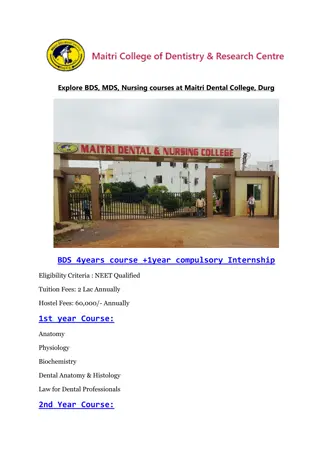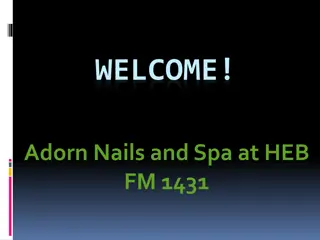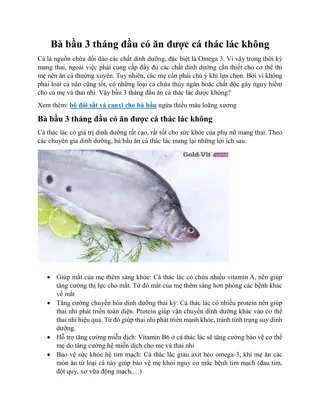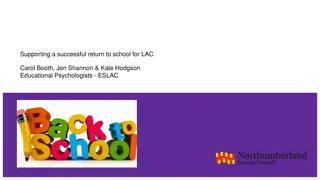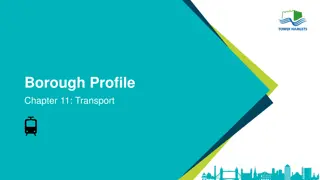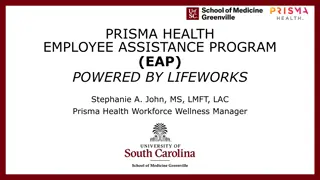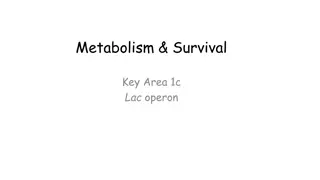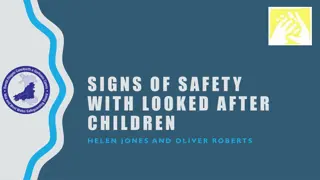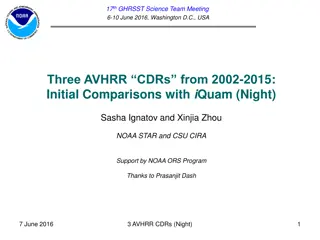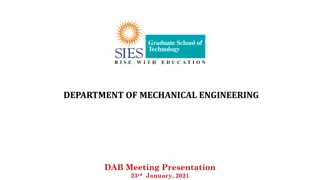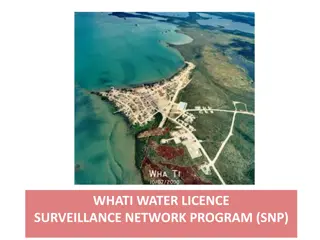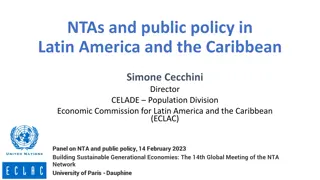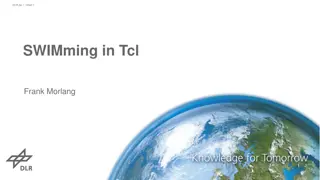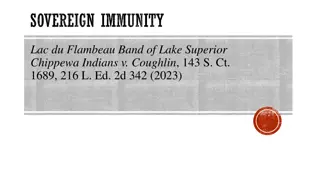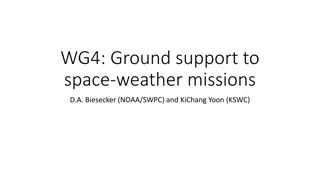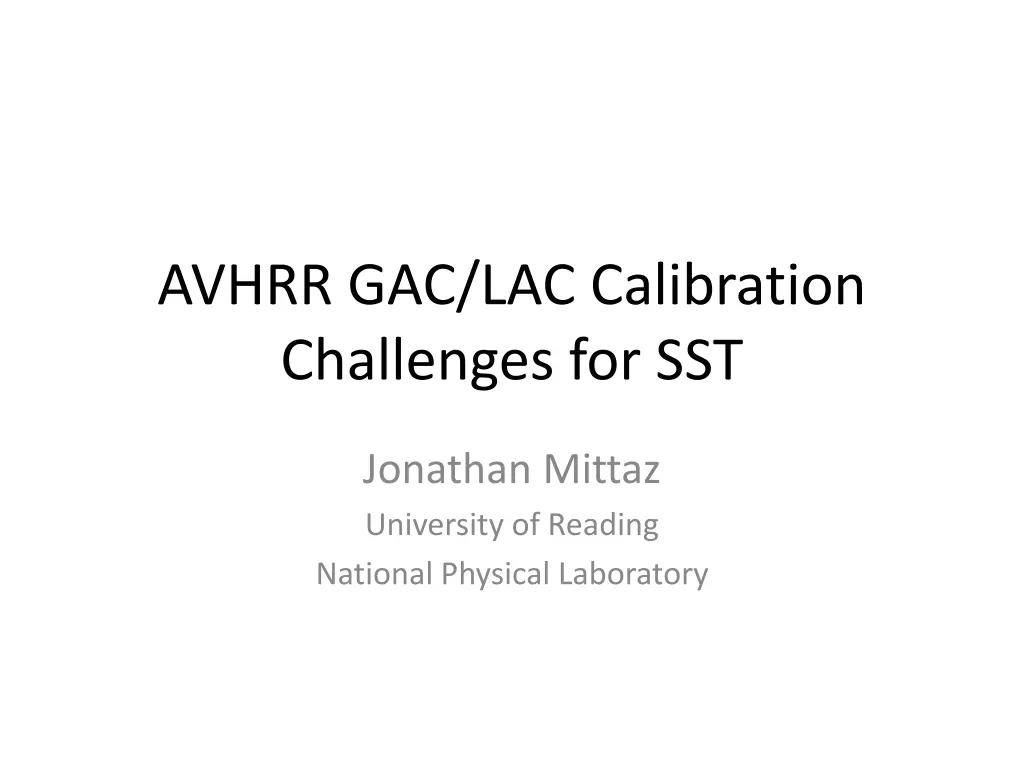
AVHRR Recalibration Challenges and Methodology Overview
Explore the challenges in AVHRR calibration for SST and the methodology for recalibration. Understand the importance of recalibration due to time-dependent biases and the sensitivity of SST to calibration errors. Discover the improvements in current recalibration processes to reduce operational bias.
Download Presentation

Please find below an Image/Link to download the presentation.
The content on the website is provided AS IS for your information and personal use only. It may not be sold, licensed, or shared on other websites without obtaining consent from the author. If you encounter any issues during the download, it is possible that the publisher has removed the file from their server.
You are allowed to download the files provided on this website for personal or commercial use, subject to the condition that they are used lawfully. All files are the property of their respective owners.
The content on the website is provided AS IS for your information and personal use only. It may not be sold, licensed, or shared on other websites without obtaining consent from the author.
E N D
Presentation Transcript
AVHRR GAC/LAC Calibration Challenges for SST Jonathan Mittaz University of Reading National Physical Laboratory
AVHRR Re-Calibration Overview Recalibration of AVHRR thermal channels comes from three different projects NOAA NCDC CDR Program Initial research on recalibration. AVHRR/3 recalibrated thermal channels will be made available through NCDC (FUNDING COMPLETE) ESA CCI SST Project First cut harmonization of AVHRR calibration from 1981 AVHRR SST CDR will be generated (along with (A)ATSR CDR) Project ends early 2017 Horizon 2020 FIDUCEO Project Focused on traceable uncertainty budgets for both FCDRs and CDRs and how to use uncertainties in a metrological consistent way Provide complete AVHRR FCDR in easy-to-use NetCDF format Create SST ensemble from uncertainties plus LSWT CDR Just started (March 2015) FCDRs available March 2017 And doing more than just AVHRR BTs/SSTs Undertstanding Accuracy Uncertainty
Why Recalibrate the AVHRR for SST? Operational calibration method changed significantly over time At least four different calibration schemes used from TIROS-N to present No consistency across whole record Need to redo the thermal IR calibration SST shows strong time dependent biases Shows how sensitive SST is to calibration biases Even the latest calibration shows significant biases MetOp-A AVHRR-IASI BTs (11 & NOAA-16 Pathfinder V6.0 SST 12 m channels) vs in-situ
Recalibration methodology Take a physical approach to algorithm across all AVHRRs Take into account scattered light/temperature gradients etc Refit calibration parameters to in-orbit data Main problem with operational calibration related to very poor pre- launch calibration data contaminating parameters (see Mittaz et al 2009 for pre-launch analysis) Use primarily GAC data for global coverage to maximize collocations Where possible use reference satellites (IASI/AIRS/(A)ATSR) via SNO like collocations No SI traceable reference as yet For earlier AVHRRs (pre-1991) use other AVHRRs and research use of HIRS/RTM (for time variable biases) HIRS/RTM research part of FIDUCEO project SSTs can be used to check how well new calibration is working SST very sensitive to calibration errors
Current Recalibration Improvements Can remove most of operational bias/time dependent bias if good overlap with references/other AVHRR Should work for post-1991 data Scene Temperature Bias Time (Instrument Temperature) Bias
Pushing increased use/knowledge of Uncertainties (FIDUCEO project) FIDUCEO takes a metrological approach Uses traceability chains to derive components of uncertainty Random and Systematic components defined separately on different spatial scales/timescales For more details see www.fiduceo.eu (once website up and running )
Challenges Recalibration of early AVHRRs No good TOA references available before 1991 (pre- (A)ATSR/AIRS/IASI) Only small overlaps between GAC level 1B data in archives In 1980s NOAA CLASS archive has no overlap data for many AVHRRs Some overlap data available from University of Miami archive (full archive including Miami data should be available at UK Centre for Environmental Data Archival (CEDA) as part of ESA CCI SST project) LAC (/HRPT) archive would be very useful here if gives more overlap data Time dependent bias means you can t transfer calibration parameters from one AVHRR to another if an overlap only exists at beginning/end of the mission Case for pre-1991 data
Problem with time dependent biases Time dependent bias related to instrument temperature(s) (thermal environment) Early AVHRR all have significant instrument temperature variations over time Could lead to spurious trends in the data if not removed but not only small overlaps between like AVHRRs (morning/afternoon) Need another reference FIDUCEO will look at HIRS and/or RTM Ideally won t use any in-situ data to maintain independence from e.g. SST CDR
Conclusions SST very sensitive to calibration errors Climate limits on trends at < 0.03K/decade extremely stringent SSTs will help understand problems AVHRR Radiance recalibration must be done to fix both scene temperature and instrument (time) dependent biases As true for HRPT/LAC archives as for GAC data Two current projects are looking at the AVHRR recalibration problem (GAC only) ESA CCI SST project will concentrate on first cut solution for the biases for all AVHRRs Parameterizations provided via ATBDs and papers H2020 project FIDUCEO will look at getting uncertainties at the pixel level as well as providing a complete AVHRR GAC FCDR including uncertainties to the community


